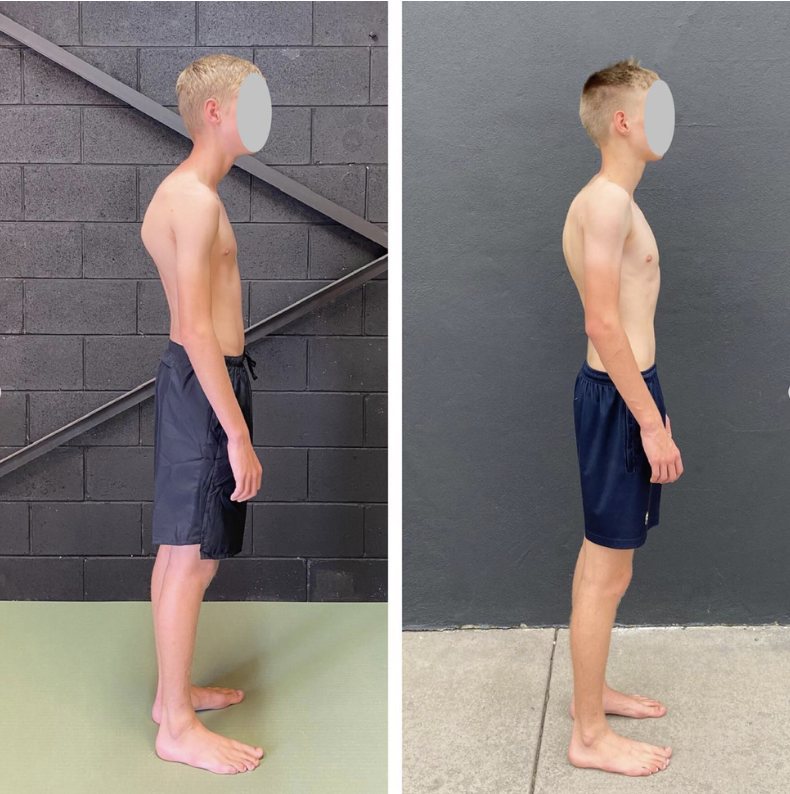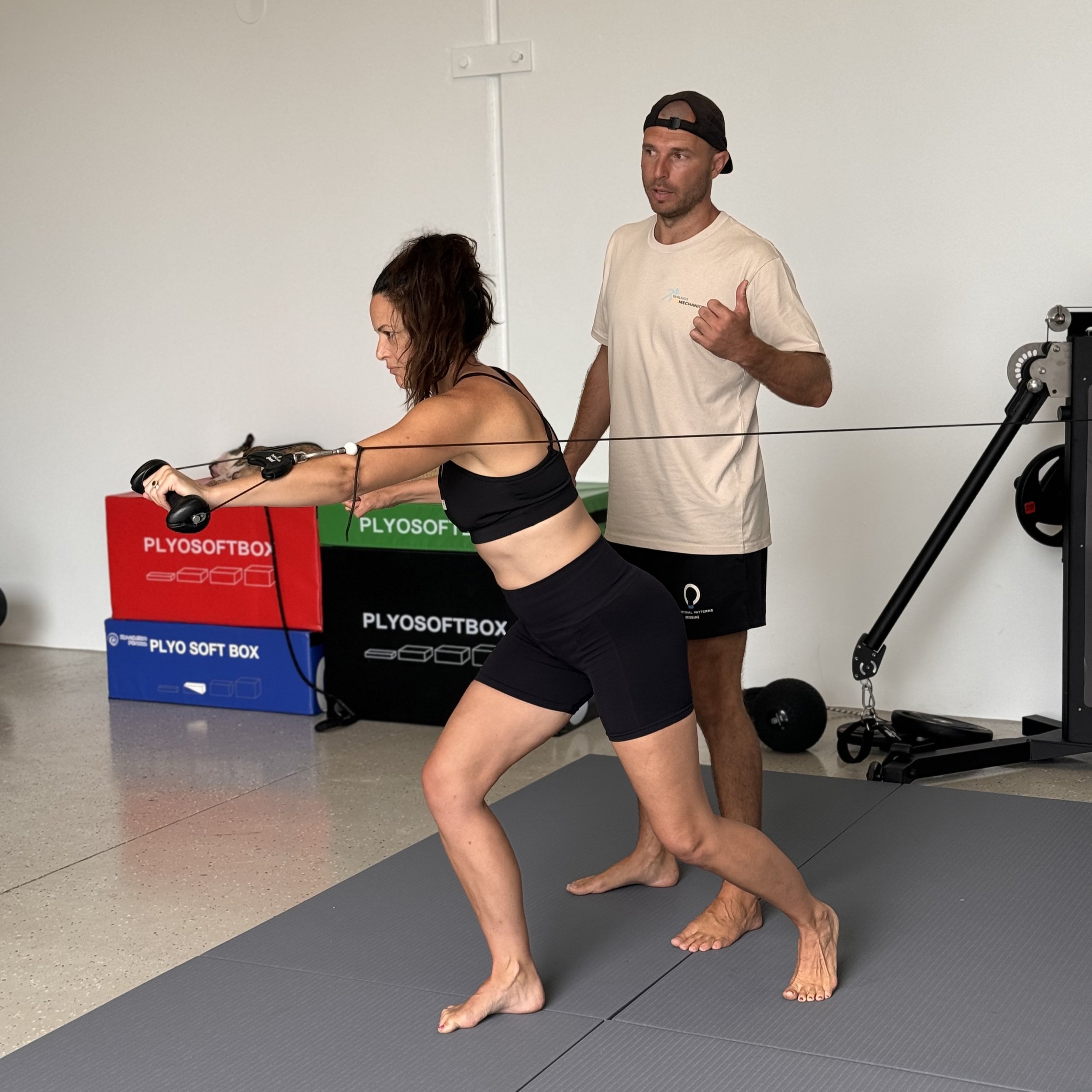How to Fix a Kinked Neck: Solutions for Lasting Relief
A kink in the neck, or what many refer to as a "stiff neck," is a common issue that many of us deal with at some point. It can cause discomfort, muscle tension, and pain, making it hard to move your head or sleep properly. Whether it happens after a bad night's sleep, a long day at the computer, or a sudden awkward movement, the pain can feel intense.
You’ve probably tried quick fixes like using a heating pad, ice packs, or even gentle stretches to relieve the discomfort, but these methods often provide only temporary relief. The real question is: How do you get rid of a kink in the neck for good?
Why Do We Get Kinks in Our Neck?
The first step in understanding how to fix a kinked neck is recognizing why it happens in the first place. Often, the problem lies deeper than just tight muscles or bad sleeping positions. The way we move and hold ourselves—our biomechanics—can directly affect the health of our neck and spine.
The neck, or cervical spine, is a delicate structure made up of vertebrae, muscles, and nerves that support the head and allow movement. When your biomechanics—the way you move and position your body—are misaligned, stress builds up in the muscles, ligaments, and joints of the neck. This can cause muscle spasms, stiffness, and pain, resulting in what we often call a kink on the neck.
One of the most common causes of neck pain and stiffness is poor posture, especially when sitting or standing in one position for too long. This can cause muscle tension in the neck and shoulders, leading to muscle strains and muscle spasms. Other issues like repetitive motions, injury, or even stress can also contribute to this tension.
But here's the catch: current solutions like taking pain relievers, using a heating pad, or applying ice packs provide short-term relief but don’t address the root cause of the pain. Without fixing the underlying issue in your biomechanics, you’ll likely experience reoccurring neck pain and stiffness.
Why Temporary Fixes Don’t Work
Pain relief methods such as counter pain relievers, ice packs, or heating pads are often recommended for quick relief, but they rarely solve the root cause of the problem. These solutions might reduce pain or temporarily help with muscle tension. However, they don’t change the way your body moves or holds itself during daily activities.
For example, if you're using a heating pad to relax stiff muscles in the neck but continue to sleep in poor sleeping positions, or if your posture while working is causing tension in the neck, the pain will likely return. This is why the same problem—how to fix a kinked neck—keeps coming back, even after you've tried all the remedies. It’s because you're not addressing the fundamental issue: the mechanics of how you move.
If you're wondering 'how to get rid of stiff neck in 10 seconds' or 'how to treat a stiff neck in 60 seconds,' the information in this blog might not be for you.
We are about to discuss the reasons necks become prone to kinks in the first place. We are about to address root cause and more permanent solutions for neck pain relief.
A Functional Patterns Before & After: Addressing the root cause of neck pain and weakness
The Connection Between Your Neck and Your Biomechanics
To truly get rid of a stiff neck, it's essential to focus on correcting your biomechanics—the way your body moves. At Burleigh Biomechanics, we use Functional Patterns to address these deeper issues in your movement and posture that are causing the pain. Your neck doesn’t exist in isolation. The alignment of your entire body affects how the neck functions.
The shoulder blades and upper back muscles play a significant role in neck health. When these muscles are weak or out of alignment, it puts more stress on the neck and cervical spine. Likewise, if the hips or lower body aren’t properly aligned, it can affect how your spine and neck move. Essentially, your neck is only as healthy as the rest of your body.
For example, muscle tension and tightness in the shoulders can affect the neck, causing pain and limiting your ability to move your head freely. Likewise, poor posture or misalignment of the spine can lead to muscle strains and muscle spasms in the neck.
How to Fix a Kinked Neck for Good
If you want to truly cure neck pain fast at home, it's important to take a comprehensive approach that addresses both the pain and its causes. Here are some effective ways to treat neck pain, using Functional Patterns' principles:
1. Correct Your Posture
One of the first things to do is to assess and correct your posture. This includes being mindful of your sleeping positions (try to sleep on your back or side, keeping your neck in a neutral position). Make sure your head is aligned with your spine, whether you're sitting, standing, or walking. Avoid slouching, which can put unnecessary stress on the neck muscles and spine.
2. Incorporate Movement
Movement is key to improving neck health, but it’s not just about moving your head in random directions. To address a kink in the neck, the focus should be on moving with correct alignment and engaging the right muscles. Often, when we experience neck pain or stiffness, it’s because our movement patterns are inefficient or misaligned. Instead of performing random stretches or tilting your head side to side, focus on improving the biomechanics of your entire body to take stress off the neck.
One of the most effective ways to reduce neck pain is by restoring functional movement patterns. This includes learning to move your head and neck in coordination with your upper body and spine, while maintaining a neutral position. For example, proper shoulder blade activation during arm movements can help relieve pressure from the neck, as can engaging the muscles of the upper back during head movements. By addressing the root causes of stiffness and pain—such as muscle imbalances and poor posture—you can ensure that your movement is aligned, reducing tension in the neck and improving overall mobility.
Functional Patterns Training: Addressing the root cause movement patterns that cause neck pain and weakness
3. Strengthen Supporting Muscles
A big part of preventing neck pain is strengthening the muscles that support the neck and spine, especially the shoulder blades and upper back muscles. Functional Patterns uses movements that target the muscles of the torso and upper body, encouraging proper alignment and strength, which takes stress off the neck.
4. Use Heat and Cold Therapies Wisely
While heat and cold treatments, like heating pads and ice packs, can provide temporary relief, they should be used in conjunction with corrective exercises. Use a heating pad to relax tight muscles, but only after you’ve done some movement or stretching. Ice can help reduce inflammation and pain after any activity or exercise that strains the neck.
5. Consult a Biomechanics Consultant/Specialist
If your neck pain continues despite these efforts, consulting a biomechanics expert can be invaluable. They can help assess your posture, movement patterns, and provide physical therapy exercises tailored to your needs. A physical therapist can also guide you in the process of correcting your biomechanics and preventing further injury.
The Bottom Line: Preventing Neck Pain for Good
Getting rid of a kink in the neck isn’t just about finding fast solutions like counter pain relievers or applying ice packs. It’s about addressing the underlying biomechanical issues that cause neck pain in the first place.
At Burleigh Biomechanics, we focus on functional movement to correct posture, strengthen the muscles that support the neck, and improve overall biomechanics. By taking a more comprehensive approach, you can not only treat a stiff neck but also prevent neck pain from coming back in the future.
If you’re tired of dealing with reoccurring neck pain and want to find long-term relief, start focusing on your biomechanics today. Correcting the way your body moves will bring lasting changes, improving not only your neck health but your overall quality of life.


